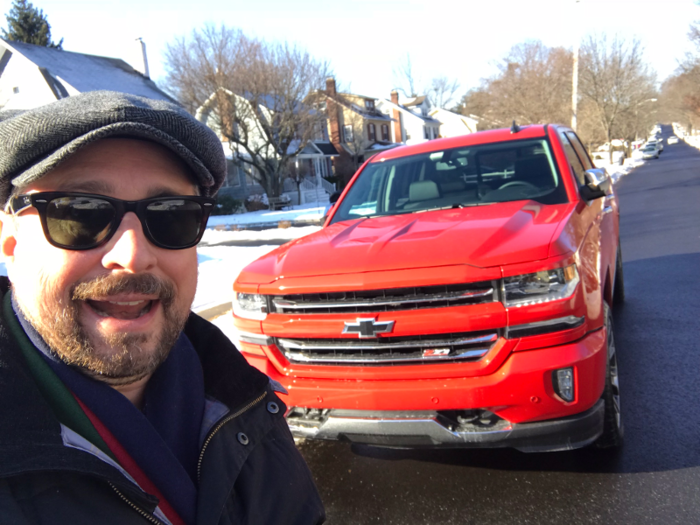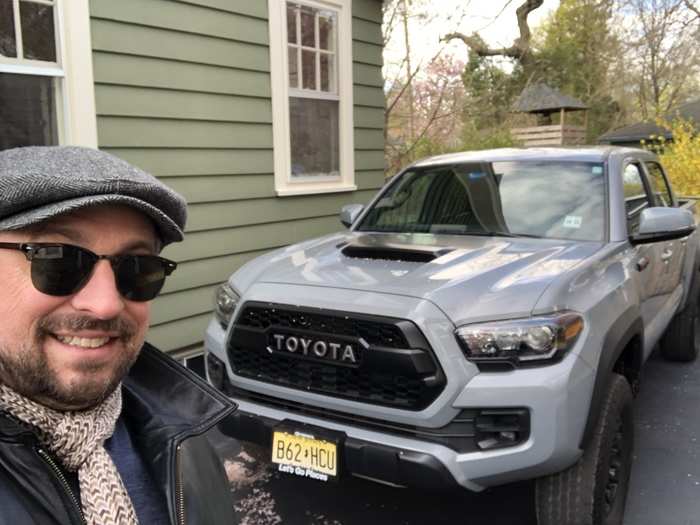- Home
- slideshows
- miscellaneous
- I drove a $53,000 Toyota Tundra pickup to see if it could hang with Chevy and Ford - here's the verdict
I drove a $53,000 Toyota Tundra pickup to see if it could hang with Chevy and Ford - here's the verdict
Behold, the Toyota Tundra, Crewmax configuration — rather out of its element in the leafy suburbs of northern New Jersey.

The competition among full-size pickups is brutal. Here's the Raptor high-performance version of the Ford F-150.
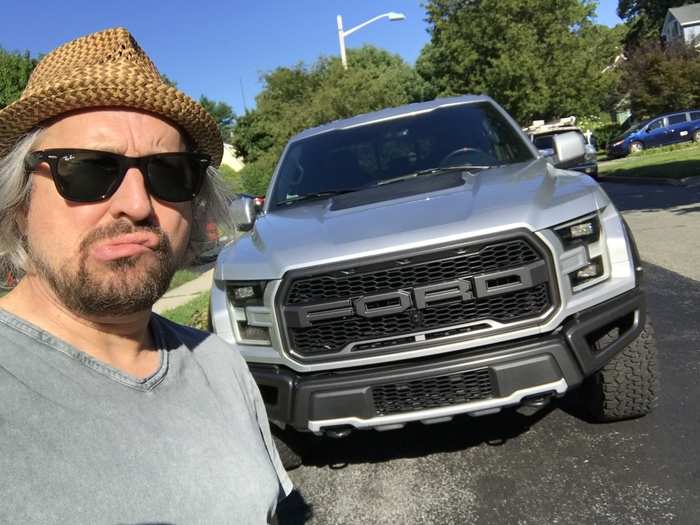
And the Tacoma TRD Sport. So we know what we're dealing with when it comes to Toyota trucks: the TRDs are tough customers.

The story of the Tundra we tested is a little different.

Our test truck was the 1794 edition, well-appointed and well-optioned at almost $53,000.
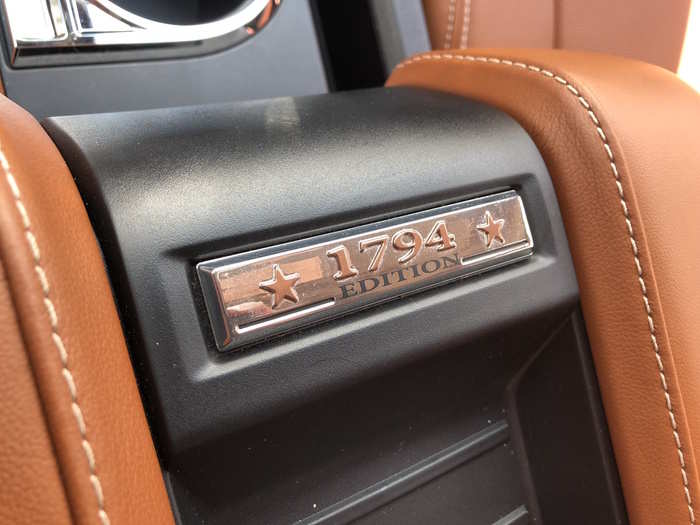
The 1794 backstory is intricate: the oldest cattle ranch in Texas, near San Antonio, dates to 1794. The property is where Toyota built its US pickup-truck factory.
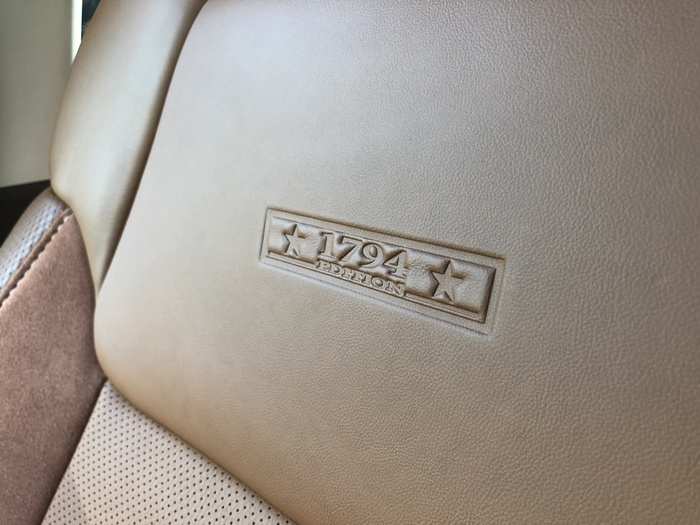
If Bentley or Aston Martin made pickups, they'd look like this on the inside: tooled butterscotch leather and upscaled bunkhouse timber. I was a real suburban cowboy for the week I tested this Tundra.
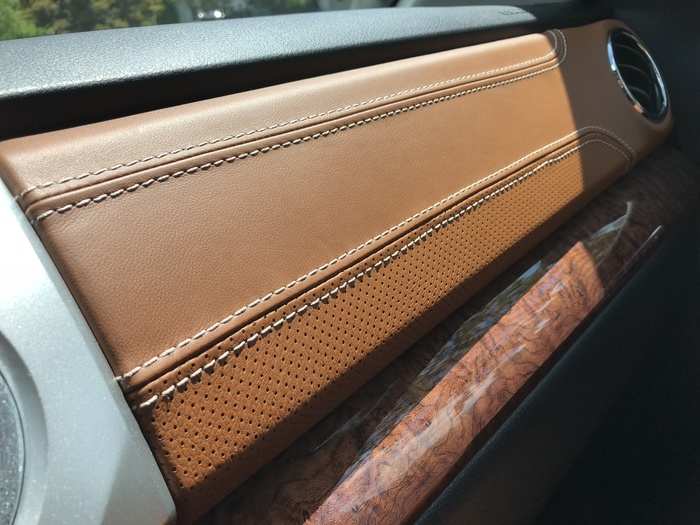
You're not going to confuse the Tundra for anything other than a full-size pickup. Ours had a five-foot, five-inch, doubled-walled bed and a power sliding rear window.
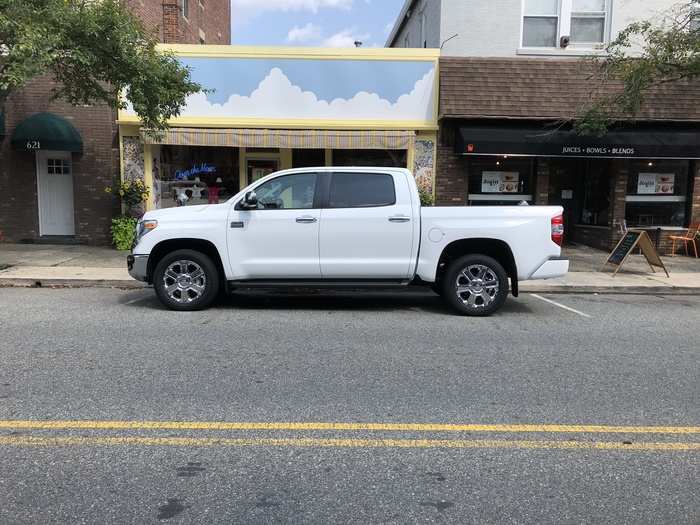
A "Super White" exterior and LOTS of chrome.
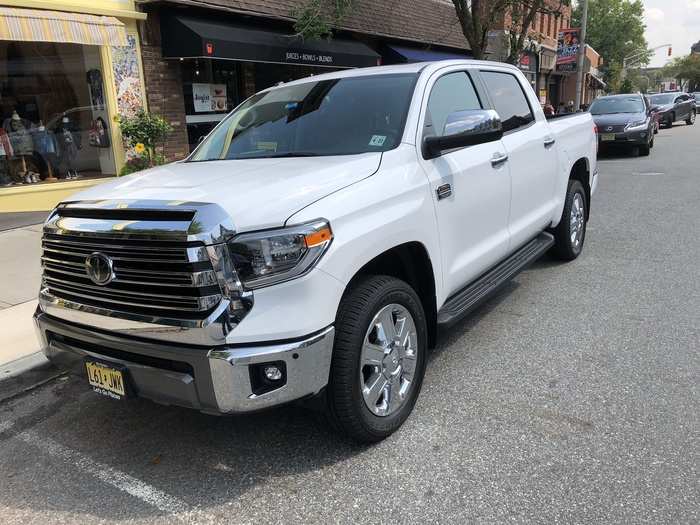
The grille is, well, a mass of chrome. The American pickup it most closely resembles is the RAM 1500 — the truckiest of pickups.
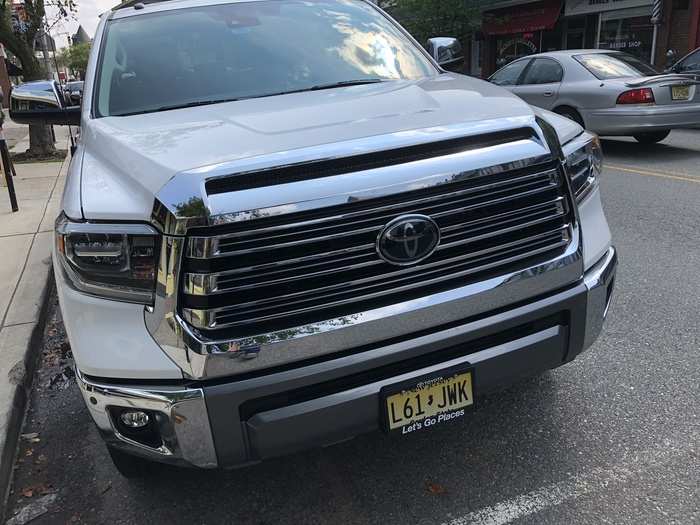
Tundra badging on the liftgate was subdued.
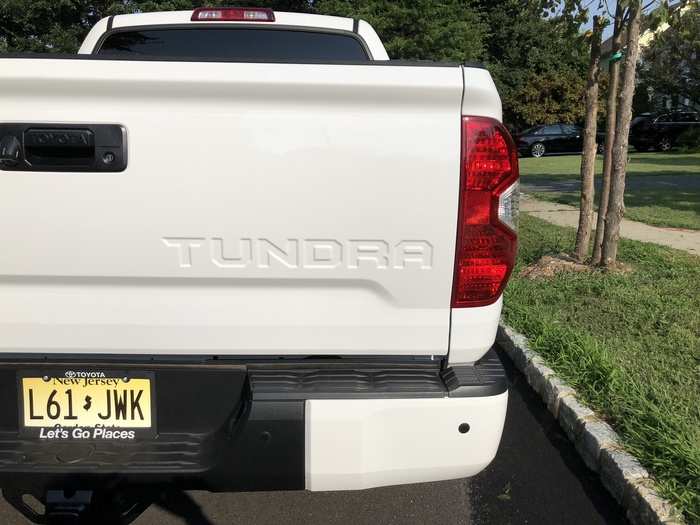
The four-wheel-drive identifier was a bit more bold. Also: more chrome.
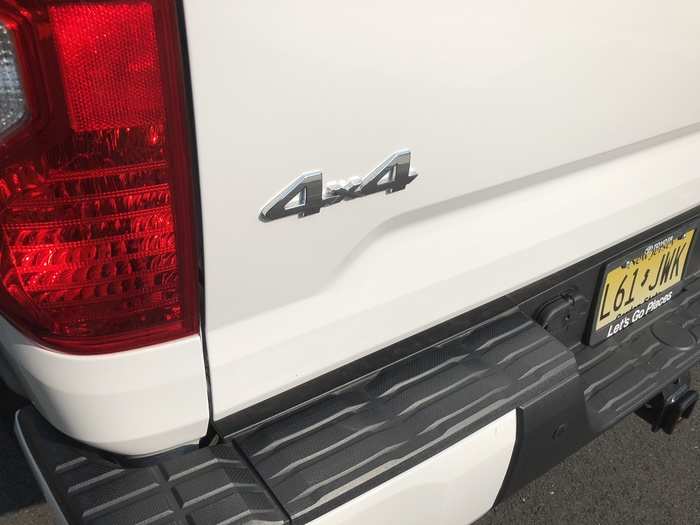
The great thing about pickups is, duh, hauling capacity. And with the 1794 Edition, you get the best of both worlds: cargo room to burn in the back, abundant premium-ness up front.
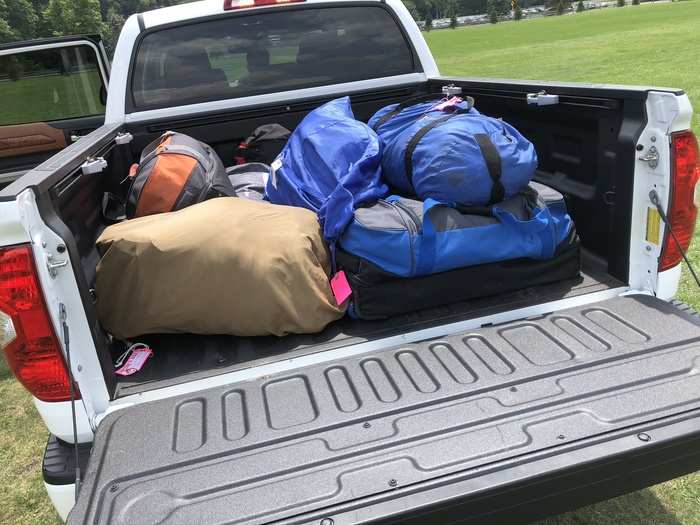
The 1794 cues continue on the outside.
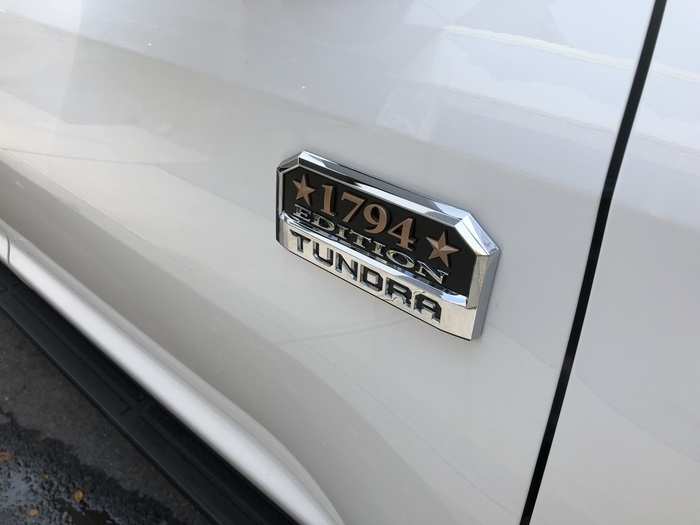
A full-size pickup with a tow-rating of 10,000 lbs. indicates some serious business under the hood.
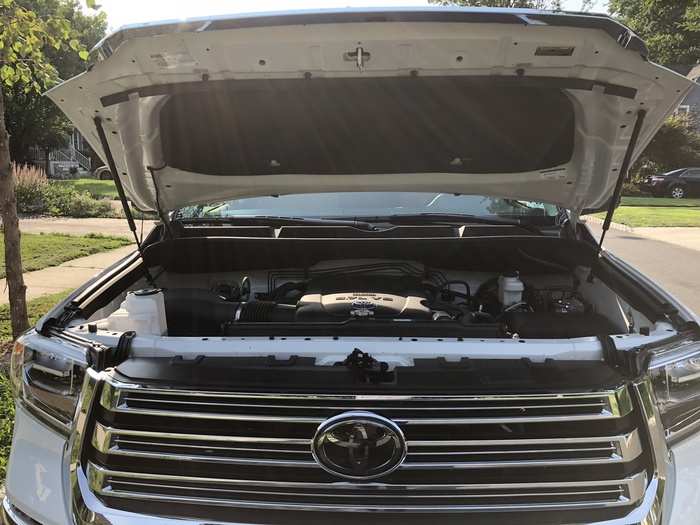
Look here! A 5.7-liter V8, making 381 horsepower, but more importantly supplying 401 pound-feet of bone-crunching torque.
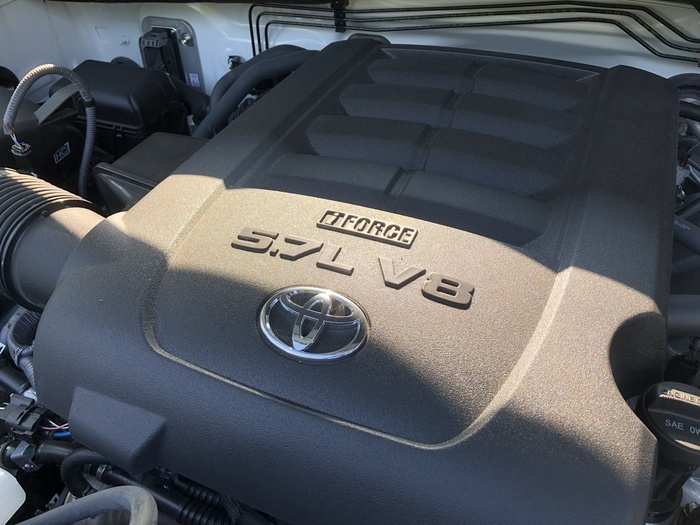
The six-speed automatic gets the job done, but both my colleague Ben Zhang and I found it to be antiquated relative to the competition. Fuel economy is a thoroughly unimpressive 13 mpg city/17 highway/14 combined.
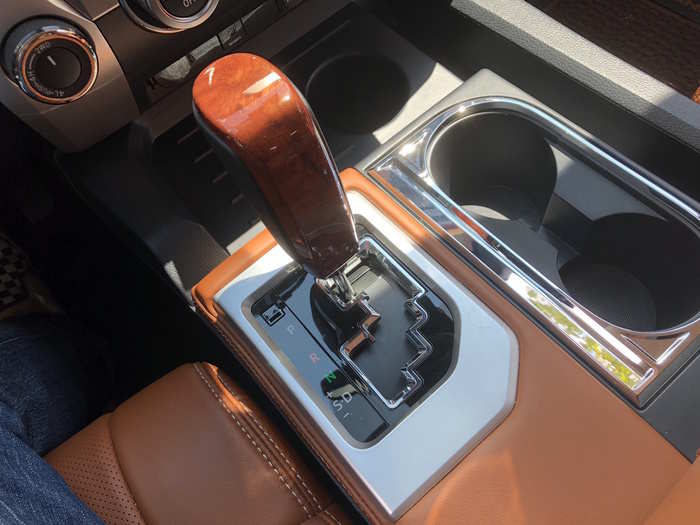
Let's climb inside, using that helpful step.
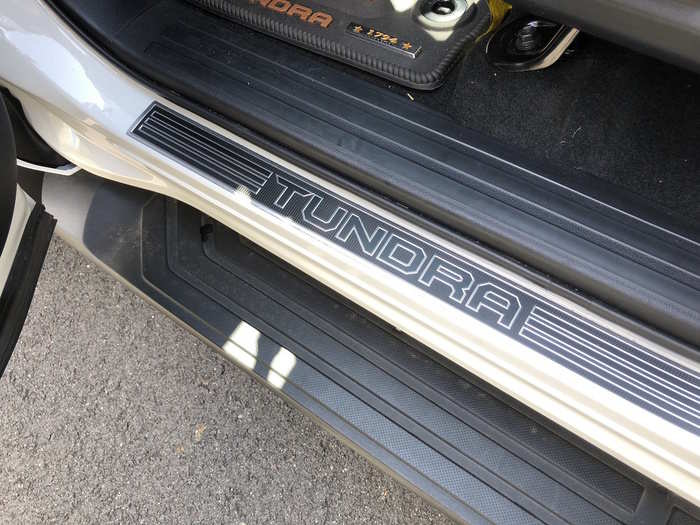
Roomy! Comfortable! The 1794 Tundra is a close second to the RAM 1500 for sheer interior bliss.
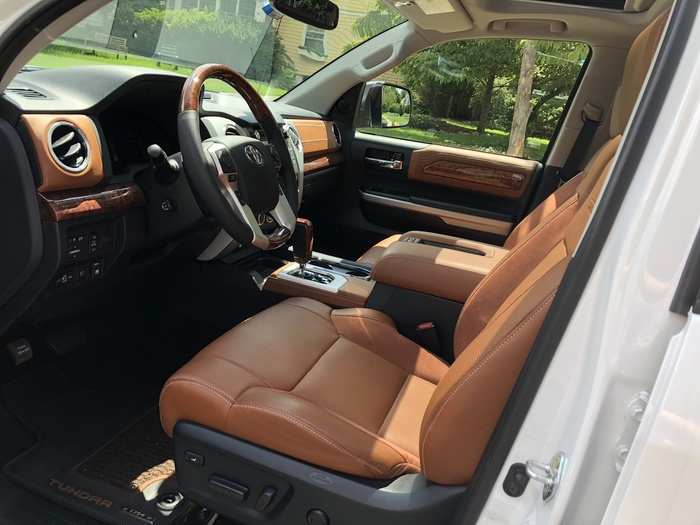
The rear seats aren't as plush, but they aren't bad.
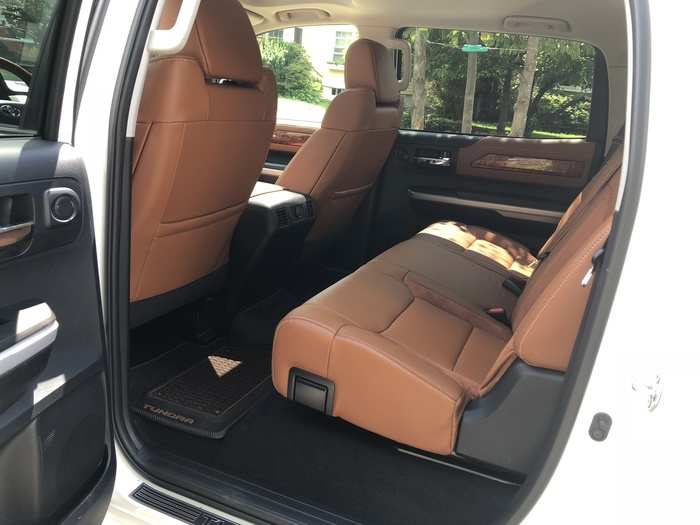
The bench design allows for three passengers.
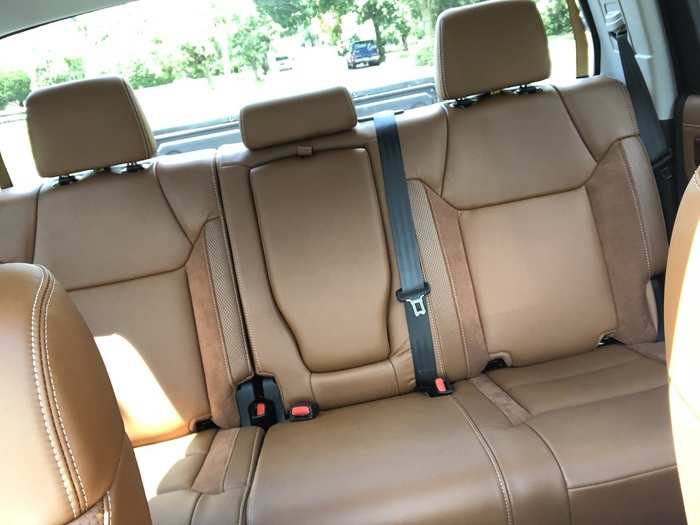
Legroom is excellent.
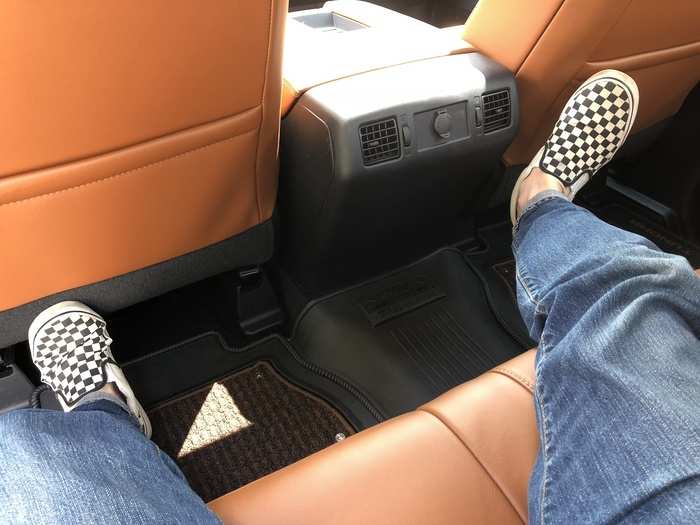
I took the Tundra on a long road trip — the same one I used the Raptor for last year. These seats — heated and cooled — did not disappoint on the long haul.
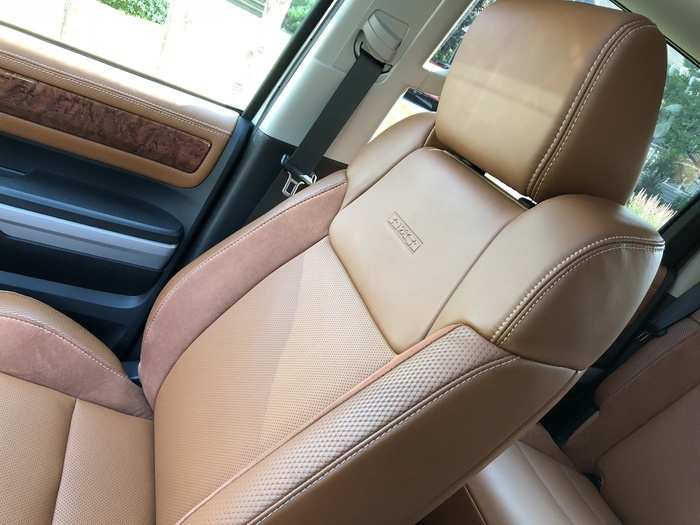
The moonroof is also a nice touch.
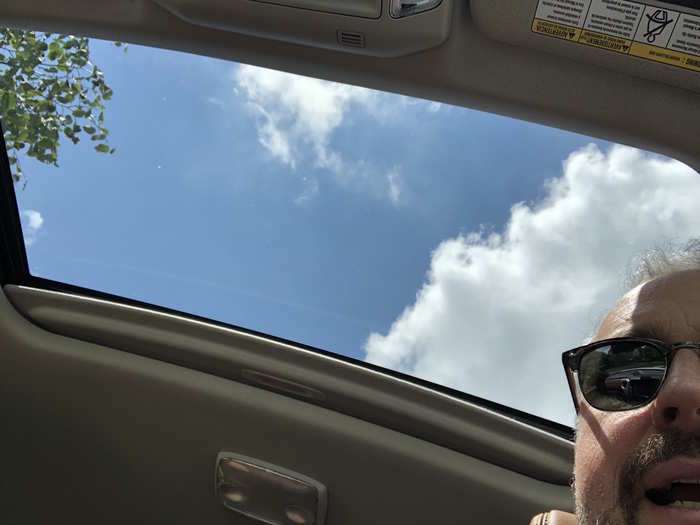
That's a NICE steering wheel, with the kind of wood-and-leather combo you'd expect to see on Toyota's luxury brand, Lexus. To be honest, the Tundra 1794 is kind of the Lexus of pickups.
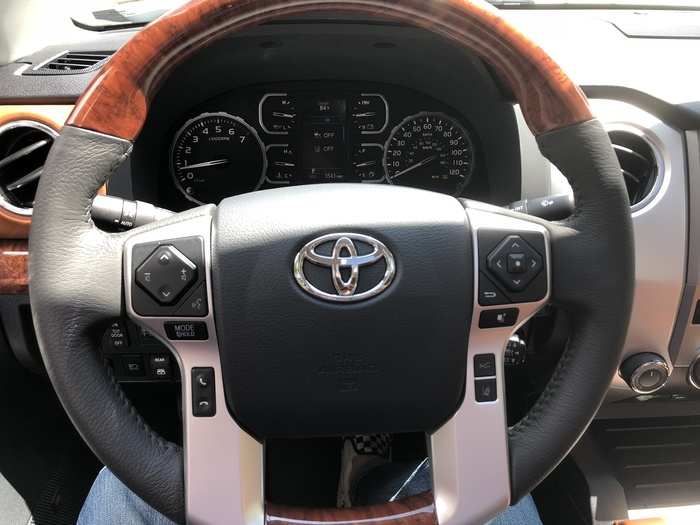
Amid chrome and brushed-metal details, you have three cupholders.
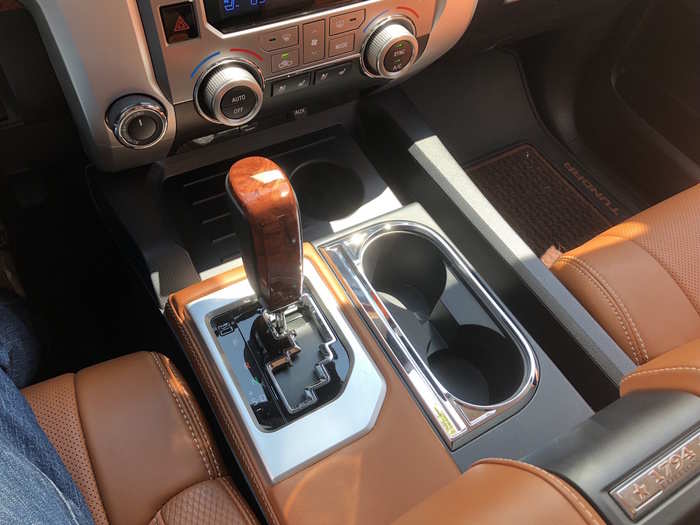
Plus a lot of charging options and USB/AUX ports.
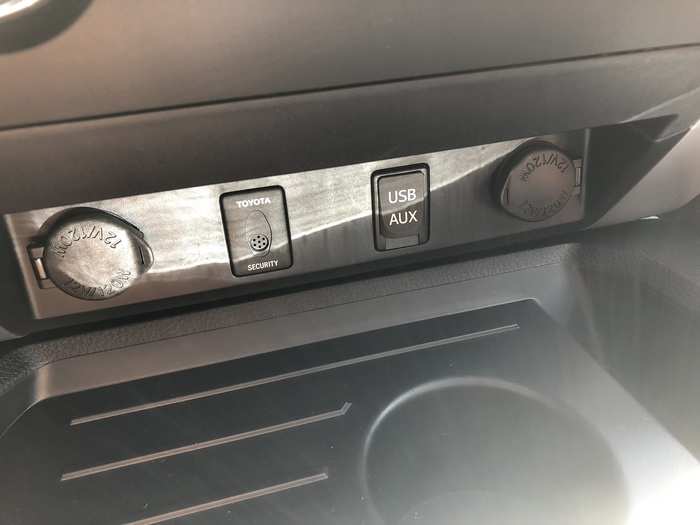
The compartment between the front seats is a cavern.
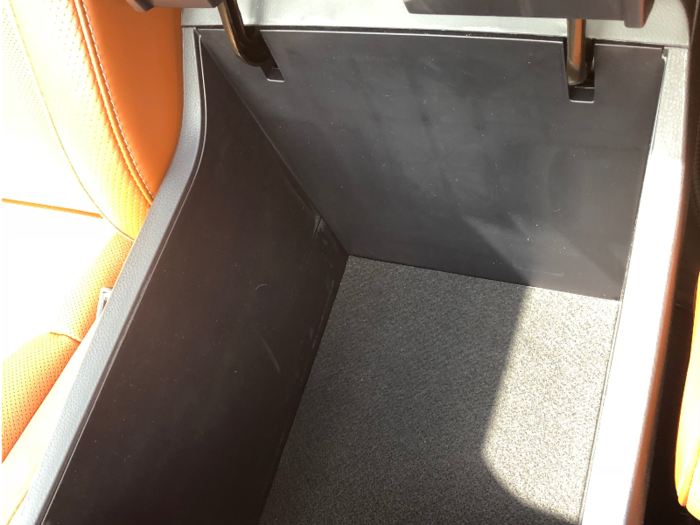
And the glovebox has its own shelf.
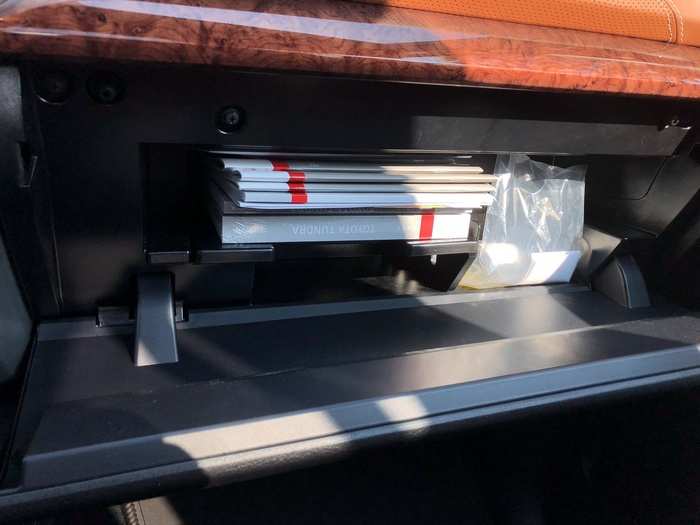
The switchgear is large and easy to find, making for ease of operation, even when wearing gloves.
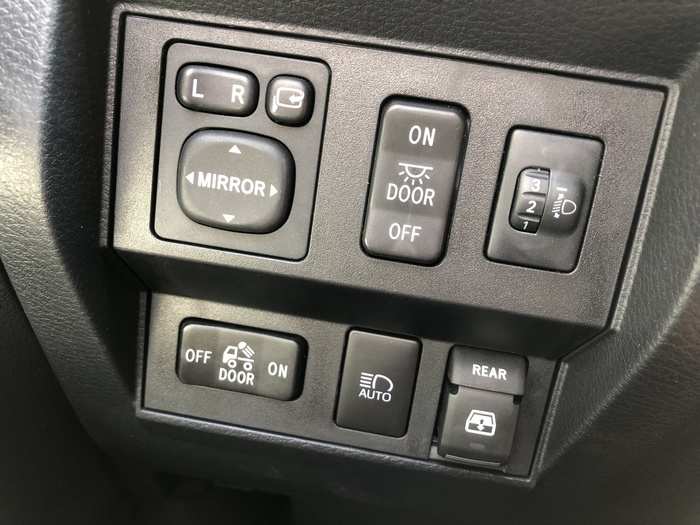
No push-button start here. You crank the Tundra to life. Technically, we're still on the second-generation of the pickup, with a refresh offered in 2014 for a design that's been around since 2007. We might see a push-button start on gen three.
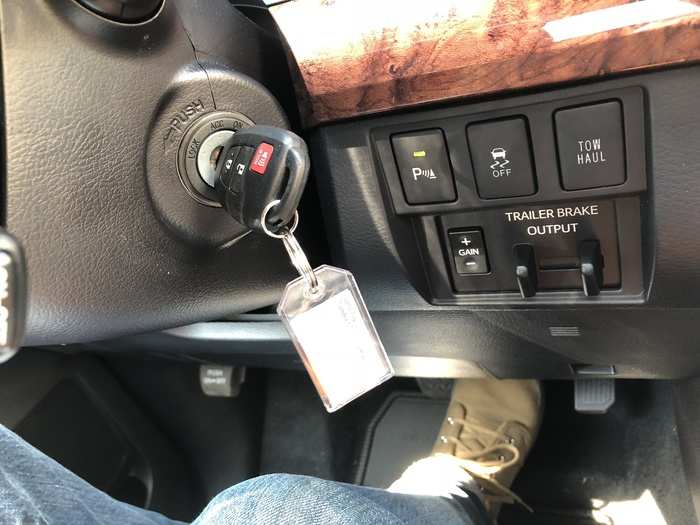
Infotainment. Well, it works fine: GPS navigation, Bluetooth connectivity, device integration, and satellite radio. The touchscreen interface is small and rather outdated, however — it's more or less the same as what I have in my 2011 Prius.
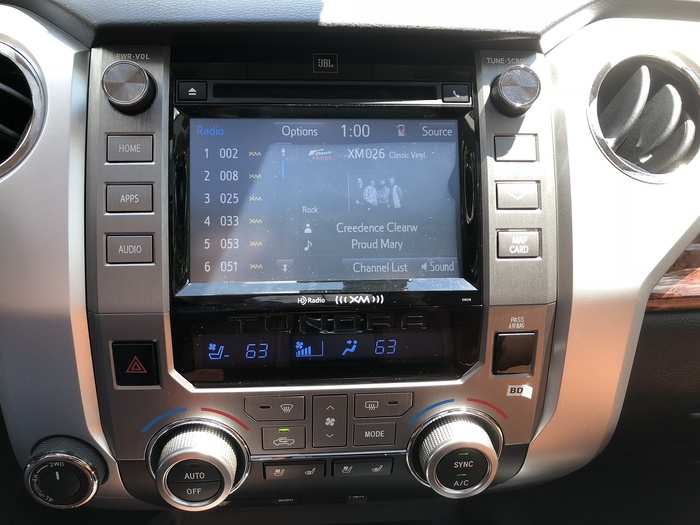
The JBL audio system is an 11-speaker rig that sounds pretty good, although it doesn't quite cross into premium territory.
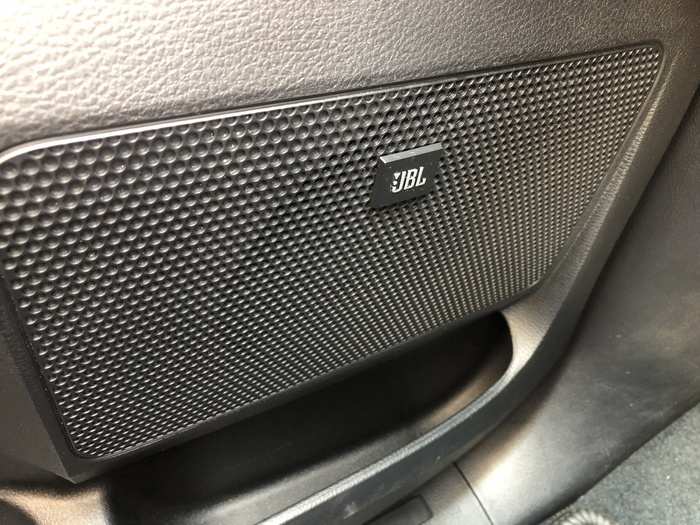
So what's the verdict?
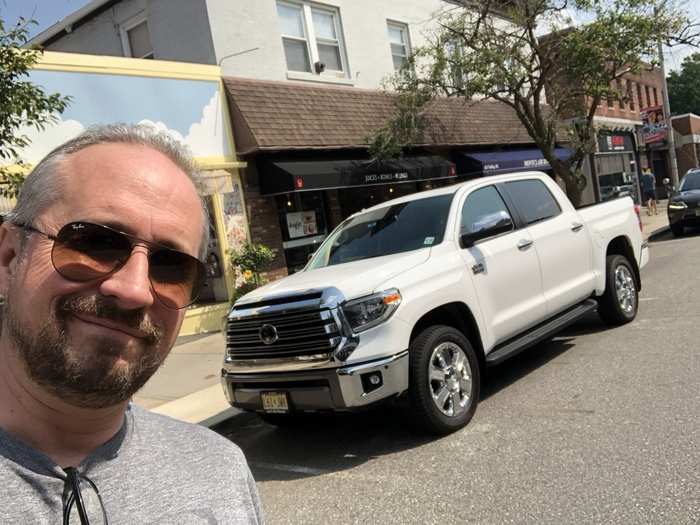
The Tundra platform is, to be blunt, ancient. The current generation of the pickup has been around since 2007. Everybody expects Toyota to update it soon, to keep pace with new full-size trucks from Ford, Chevy, and RAM.
Except, of course, that there's no rush. The Tundra, while a dandy truck, isn't even remotely competitive with the big three. And yet Toyota continues to crank on the vehicle, to satisfy what is by its standards robust US demand.
You may have anticipated the punchline, set up by that clunky six-speed automatic transmission, that gas-chugging big V8 motor, and the circa 2010 infotainment system. That's right, Toyota doesn't need to expend resources on the Tundra because it isn't a combatant in the great pickup war that's ongoing among the Detroit big three.
The crusty old Tundra isn't broken, so why fix it?
Indeed! In my testing of the truck, I was almost ready to call it my new favorite, second only to the exquisite RAM 1500. There's something to be said for a platform that simply performs, is notably comfortable, and that carries Toyota's ironclad reputation for reliability.
For example, that thirsty V8 and steampunk six-speed aren't likely to give you much trouble. And you know that even if you beat this pretty vehicle to pieces, it won't let you down. Toyotas are tanks.
Ride quality truly stands out. The RAM 1500, with its all-around independent suspension (the Silverado and F-150 continue to use leaf springs), is like driving an old-school American sedan. But the Tundra is like piloting a Lexus. The contrast with the more crude, purposeful Tacomas we've tested is vivid. Rolling around town or up into the country, the Tundra rapidly impressed me with its soothing, car-like manners and handling.
When you need it, of course, that torque-y V8 is there for ya. But for long hauls, I'd choose the Tundra over just about any other big pickup.
At around $30,000 for the base truck, the Tundra is price-competitive with everything else in the segment. But given that Ford, FCA, and GM have all revamped their full-sizers, Toyota is going to have to do something with the Tundra to sustain its market share.
No one is asking Toyota to mess with a good thing — and the Tundra is pretty darn good — but the segment is modernizing and Toyota can't wait forever to roll out a gen-four Tundra. That said, it can wait a few more years without enduring significant damage.
Sometimes it's an advantage to be number four!
Popular Right Now
Popular Keywords
Advertisement
